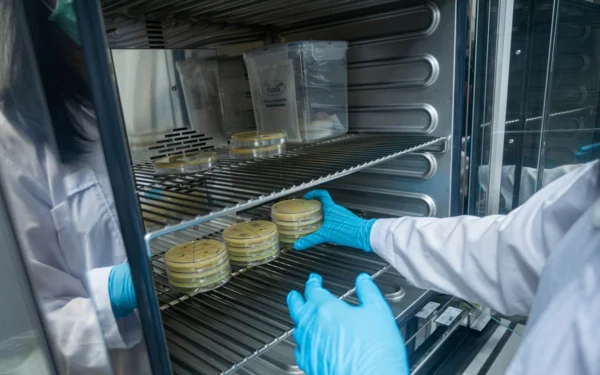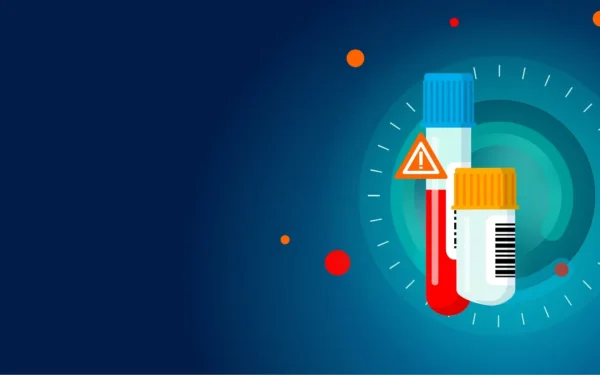The life sciences industry is undergoing a massive transformation. For decades, labs have relied on paper-based systems, leaving them struggling with data silos, manual processes, and limited collaboration. But in the current fast-paced, competitive research environment, paper just doesn’t cut it anymore. Efficient lab management is critical to success. To stay competitive and at the forefront of scientific discovery, labs must embrace digitalization and evolve into insight-driven powerhouses. The tools needed to achieve this include electronic lab notebooks (ELNs), laboratory information management systems (LIMS), laboratory equipment management platforms, and machine learning applications.
But how do you start, and how do you make this transition smoothly? Moving from paper to digital can seem daunting, with concerns about research disruptions and unforeseen challenges. The key is to approach it strategically, with a clear roadmap that outlines the necessary steps and considerations.
Why transform from a paper-based lab to a digital lab?
Before delving into the “how,” let’s take a moment to understand the “why.” Why should your lab invest in digitalization? The benefits are numerous and impactful:
- Improved data management: Centralized digital systems eliminate data silos and prevent data loss, making it easier to access, analyze, and share data.
- Enhanced collaboration: Digital platforms facilitate seamless collaboration between researchers, regardless of location.
- Increased efficiency: Automating manual processes frees scientists’ time for more strategic and creative work. This leads to greater operational efficiency, reducing time to market and improving overall productivity.
- Better data integrity: Digital systems reduce the risk of errors and ensure data accuracy and reliability.
- Faster time to market: By streamlining workflows and accelerating research, digital transformation can help bring new products to market faster.
- Improved regulatory compliance: Digital systems simplify data tracking and management, ensuring compliance with regulatory requirements.
These benefits translate into significant competitive advantages, enabling organizations to accelerate research, improve decision making, and, ultimately, drive scientific innovation.
The need for laboratory digitization
In today’s fast-paced scientific landscape, laboratory digitization is no longer a luxury but a necessity. Transforming traditional lab operations into a digital format is essential for improving efficiency, reducing human error, and enhancing data accuracy. By leveraging digital tools and technologies, laboratories can manage data, samples, and workflows more effectively.
The increasing complexity of laboratory operations demands more efficient and accurate data management solutions. Laboratory digitization addresses this need by streamlining operations, reducing costs, and boosting productivity. For scientific organizations, this means researchers can focus on core activities like research and development rather than being bogged down by manual data entry and paperwork.
Moreover, digitization is a critical component of the broader digitalization of scientific research and development. It enhances the overall efficiency and effectiveness of lab operations, leading to better research outcomes and faster time-to-market for new discoveries. By embracing digital platforms, labs can unlock their full potential and drive scientific innovation forward.
Key steps in the digital transformation journey
So, how do you make the leap from paper to digital? Here are key steps in your roadmap to success:
Assess the current state of your laboratory
Identify your biggest pain points, inefficiencies, and data management challenges. Understand your existing workflows, processes, and technologies. Is critical data buried in paper notebooks? Do researchers waste hours manually transferring information between spreadsheets? Are version control issues slowing down collaboration? Is your sample tracking efficient? This assessment will provide you with a baseline for measuring progress and identifying areas for improvement.
Define your vision and goals for a laboratory information management system
What do you want to achieve with digitalization? What does a digitally driven research powerhouse look like for your organization? Some labs might prioritize real-time data access and seamless collaboration, while others may focus on integrating automation to streamline workflows. Whatever your goal, defining a clear vision will help you select the right software and technologies.
Choose the right lab management software
Selecting the right research lab management software is critical for success. Consider solutions that address your unique needs and integrate seamlessly with your existing systems. Consider lab management tools designed to streamline laboratory operations, enhance sample tracking, manage workflows, facilitate quality control, and integrate various lab data sources. Selecting a platform that can scale with your lab’s needs will ensure long-term success. Key systems to consider include:
- Electronic lab notebooks (ELNs): Replace paper notebooks with ELN software, enabling better data capture, organization, and collaboration.
- Laboratory information management systems (LIMS): Manage samples, experiments, and workflows in a centralized system, improving efficiency and data integrity.
- Data integration platforms: Connect disparate instruments and software, reducing manual data entry and ensuring seamless data flow across your organization.
- AI and machine-learning tools: Use advanced analytics to identify trends, automate data analysis, and accelerate hypothesis generation.
Establish a laboratory information management strategy with security and compliance at the forefront
A robust strategy that addresses data governance, standardization, storage, and backup is essential for ensuring data quality, accessibility, and security. Moving to digital introduces new data governance challenges. Protecting sensitive data from breaches, ensuring compliance with regulatory standards (such as FDA 21 CFR Part 11 or GLP/cGMP), and maintaining audit trails should be top priorities. Work with your IT and compliance teams to establish cybersecurity and data management policies.
Implement your transformation in phases
Don’t try to implement everything at once. Instead, break down the transformation into smaller, manageable phases. You can start with a pilot project to test the waters to gain valuable experience, and then gradually roll out new technologies and processes across the wider organization.
Involve your team in decision-making and testing
Digitalization requires a shift in mindset and, to some extent, skill set. Be sure to bring your team along with you, spending the time to get their feedback and investing in training on the new technologies and processes. Provide ongoing support and encouragement to embrace the change.
Embrace automation
Identify opportunities to automate manual processes such as data entry, sample tracking, and report generation. Workflow automation, using lab management software, can improve efficiency significantly and reduce the risk of errors.
Foster a culture of innovation
Encourage your team to experiment with new technologies, software, and approaches. Create a culture of continuous improvement in which everyone is empowered to identify and implement better ways of working.
Measure success and continually optimize
Transforming your lab to digital doesn’t end with implementation—it is an ongoing process. Establish key performance indicators (KPIs) to track key metrics such as research output, data quality, time to market, and researcher satisfaction. Use this data to identify areas for improvement and adjust your strategy accordingly. Regularly monitor your progress against your goals.
Leverage artificial intelligence (AI) for deeper insights
AI isn’t about replacing scientists—it’s about augmenting their abilities. Consider incorporating AI-powered tools to assist with tasks like experiment design, data querying, and data integration. This allows the scientists to focus on higher-level analysis and problem solving. AI-powered analytics can sift through vast datasets, identifying patterns that may go unnoticed by human analysis. By integrating automation and AI, your organization can transition from data collection to data-driven decision making.
Why scientists still matter in scientific organizations
It is important to remember that digitalization isn’t just about technology. It’s also about people. While digital tools can automate tasks and provide valuable insights, they cannot replace the creativity, critical thinking, and scientific expertise of human researchers. AI is a powerful tool, but it’s still in its early stages of development. It excels at tasks like information retrieval and translation, but lacks the reasoning and problem-solving skills of an experienced scientist.
The key is to find the right balance between human expertise and digital tools. Empower your scientists and lab members with the best possible technology, but also ensure they have the skills and knowledge to use it effectively without having to rely on external resources.
Embracing the future of life sciences research through digitalization
Transforming from a paper-based lab into a fully integrated digital research powerhouse in a laboratory setting may be challenging, but it is a rewarding journey. By following a strategic roadmap to implement lab management software, embracing technological advancements, and empowering your colleagues, you can unlock the full potential of your research, increase productivity, and accelerate scientific breakthroughs. Modern software solutions can integrate with various lab instruments to enhance research workflows, automate data collection, and improve operational efficiency.
For best practices on overcoming deployment obstacles, check out our article Tackling Common Hurdles When Deploying New Data Management Platforms in Complex Lab Environments.
The question is no longer whether labs should go digital, but how fast they can transition. Are you ready to take the leap?





